*NURSING > QUESTIONS & ANSWERS > Clinical Modalities Exam 3 Questions and Answers Already Passed (All)
Clinical Modalities Exam 3 Questions and Answers Already Passed
Document Content and Description Below
Clinical Modalities Exam 3 rahe-holmes - - - What is the scale that rates stressful events in a person's life? dissociative symptoms - - - Acute Stress Disorder is associated with presence of _____... ________________________ symptoms. maturational crisis - - - Name a type of crisis that arises internally; follow different stages of growth that humans experience; happens each time a person enters a new stage of life, they realize their old coping skills are inadequate. pre-crisis level of functioning - - - The most reliable outcome for crisis intervention with regard to post-crisis level of functioning is to determine that the patient is at their ___________________ how they handled crisis in the past - - - The best was to assess a patients coping skills is to inquire about _______________________________________ place the trauma in the larger perspectives of their lives. - - - Primary goal of PTSD treatment is to help them what? Phase 1 = problem arises that increases anxiety levels. You would most likely observe anxiety. Phase 2= Usual problem solving techniques don't work, anxiety rises. Trial and error attempts are made to restore balance. Phase 3= Trial and error attempts fail and anxiety rises to severe or panic levels. Phase 4= when these measures don't reduce anxiety, the anxiety overwhelms the person and leads to serious disorganization. This signals the patient is in crisis. - - - What are Caplan's 4 stages of crisis? Psychological first aid - - - What is a set of procedures called that help facilitate survivors' adaptive coping in a disaster? asking if a supportive person can be with them the next few days - - - The PMHNP can best help a person who receives devastating news by ___________________________________ disequilibrium - - - It is important for the PMHNP to understand that when a patient is in crisis they are in a state of ________________________ individual psychotherapy - - - What is the most appropriate modality to use with schizoid personality disorder? assist the client in identifying appropriate coping strategies - - - The best response by PMHNP when speaking with a client with BPD and wants to cut themselves is to_____________________________ dysfunctional behavior but mostly the patient's best effort to cope - - - If a BPD client who has been making progress has an anxiety producing event arise and cuts again this is __________________________________________ ? splitting - - - A client with borderline personality disorder dramatically expresses feelings about each nurse on the staff, stating that only one nurse is understanding and trustworthy — the nurse the client is talking to at the time. This client is demonstrating which behavior? self mutilation - - - ___________________________ is mainly due to fear of abandonment or the increase of independence? perceived rejections - - - BPD is often characterized by an inability to tolerate __________________________? their emotional distress - - - Patients will respond better to limit setting if the PMHNP can reflect back to the client an understanding and validation of ______________________ ? separation-individualization - - - Client's with BPD have not successfully achieved the developmental stage of ________________________ ? paranoid personality disorder - - - Name the personality disorder described below: A pervasive distrust and suspiciousness of others such that their motives are interpreted as malevolent, beginning by early adulthood and present in a variety of contexts. A person who has a longstanding feeling of mistrust or suspicion, no hallucinations, no delusions, and no antisocial behavior? paranoid personality disorder - - - Clients with which disorder do not trust easily and its best to use a respectful neutral approach? project blame for their own shortcomings on others - - - Clients with paranoid personality disorder are critical of others because they _____________________ ? narcissitic personality disorder - - - characterized by inflated or grandiose sense of themselves and an extreme need for admiration (expect others to notice their special qualities, even when their accomplishments are ordinary, and they enjoy basking in the light of adulation; selfabsorbed, lack empathy for others; strong sense of entitlement; tend to be preoccupied with fantasies of success and power, ideal love, or recognition for brilliance or beauty) schemas - - - Conceptual frameworks a person uses to make sense of the world is __________________________ ? cognitive therapy - - - What is the modality that prioritizes a client's schema? mindfulness - - - Being alert, mentally present, and cognitively flexible while going through life's everyday activities and tasks. pain is better than not feeling anything at all - - - Self-mutilation occurs because a client may feel that ___________________________________ abandonment - - - Self mutilation results from feelings of ________________________ manipulative - - - Self mutilation can be a _______________________gesture? safety plan - - - Self mutilation can occur after a ______________ _______________ is put in place? DBT - - - Which modality helps replace irrational thoughts? Dialectal behavioral therapy - - - What is the only psychotherapy to demonstrate any efficacy in treatment of ANY PDs? boundaries - - - Respecting a patients ______________________ is important in establishing a therapeutic relationship with a patient with BPB. Dependent personality disorder - - - Name the personality disorders described below: A person who gets others to assume responsibility, has difficulty expressing disagreement, and often has an abusive spouse? A personality disorder characterized by a pattern of clinging and obedience, fear of separation, and an ongoing need to be taken care of. dichotomous thinking - - - View a situation in only two categories instead of on a continuum (all or none; black or white) MCI expectant category - - - Gerald Caplan - - - pioneer in the crisis intervention movement; popularized classifications of groups as primary, secondary, and tertiary Crisis Phase 1 - - - A problem arises that contributes to increase in anxiety levels. The anxiety stimulates the implementation of usual problem-solving techniques of the person. This is crisis phase _______ ? Crisis Phase 2 - - - The usual problem-solving techniques are ineffective. Anxiety levels continue to rise. Trial-and-error attempts are made to restore balance. This is crisis phase _______ ? Crisis Phase 3 - - - The trial-and-error attempts fail. The anxiety escalates to severe or panic levels. The person adopts automatic relief behaviors. This is crisis phase _______ ? Crisis Phase 4 - - - When these measures do not reduce anxiety, anxiety can overwhelm the person and lead to serious personality disorganization, which signals the person is in crisis. This is crisis phase _______ ? Crisis Development Stage 1 - - - Normal stress and anxiety level - the background of crisis development brought about by the minor annoyances and frustrations of everyday life. Individuals at this stage are rational and in control of their emotions and behavior. This is crisis development stage _____ ? Crisis Development Stage 2 - - - Rising anxiety level - a heightened condition typically including rapid heart rate and respiration. The person might appear lost or confused about how to solve a problem. Voice may be pitched higher or quaver with accelerated speech patterns. Small nervous habits such as finger or foot tapping may be manifested. This is crisis development stage _____ ? Crisis Development Stage 3 - - - Severe stress and increasing anxiety - a person's reasoning capacity is seriously diminished, with fixation on the here and now. Behavior typically becomes boisterous or disruptive. Communication may include shouting, swearing, argumentation, and threats. Physical indications include pacing, clenched fists, perspiring, and rapid shallow breathing. This is crisis development stage _____ ? Crisis Development Stage 4 - - - Acute crisis - characterized by unbearable anxiety and loss of cognitive, emotional, and behavioral control, with urgent need to end the emotional pain. A person in crisis is unable to solve problems or process information rationally without help. Behaviors of persons in crisis are erratic and unpredictable to a point that they may pose a danger to themselves and others. This is crisis development stage _____ ? 1. Pre-warning of the disaster. 2. Disaster event occurs. 3. Recuperative effort. - - - Natural and man-made disaster can be conceptualized in what three phases: [Show More]
Last updated: 1 year ago
Preview 1 out of 31 pages
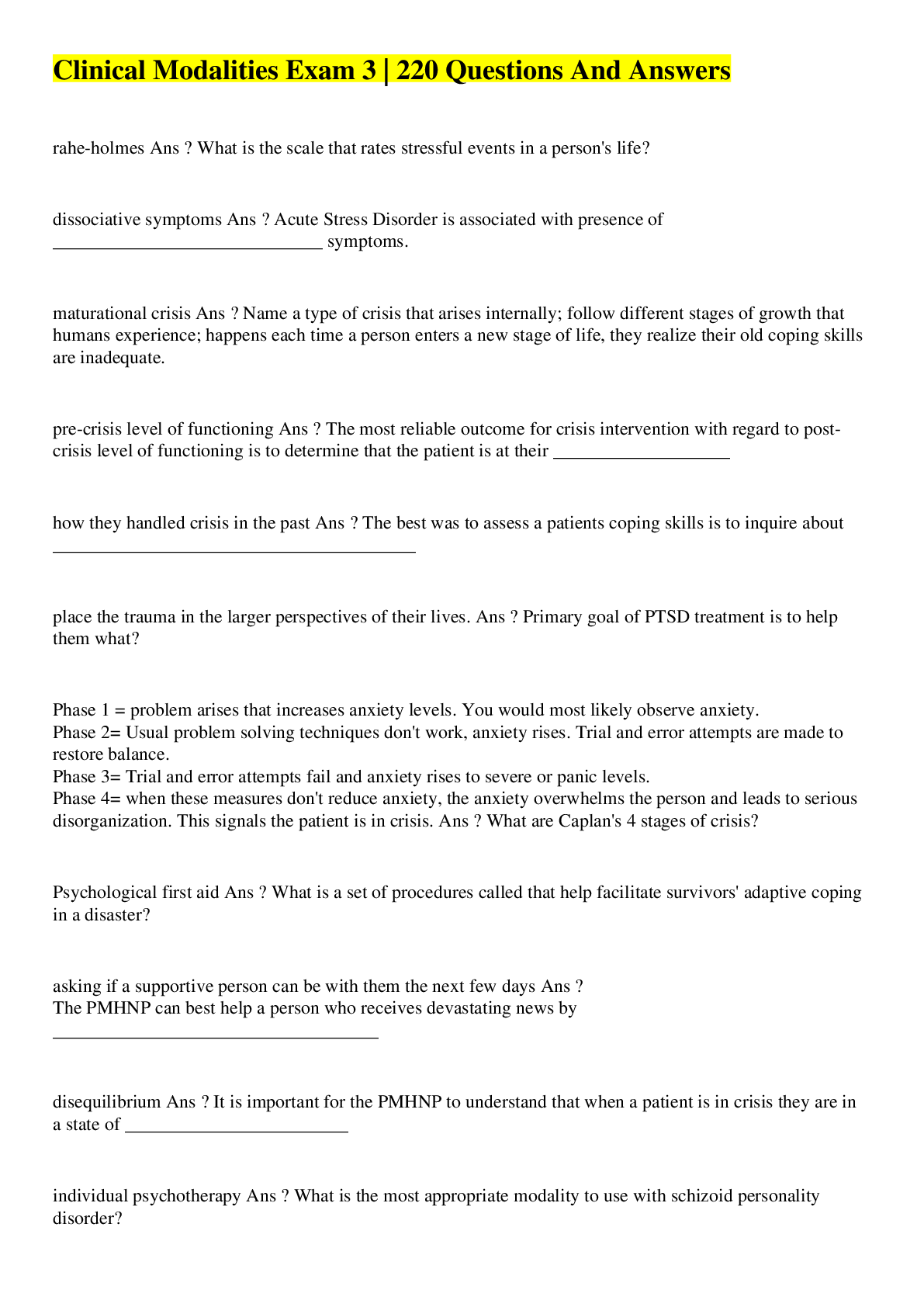
Reviews( 0 )
Document information
Connected school, study & course
About the document
Uploaded On
Jul 07, 2022
Number of pages
31
Written in
Additional information
This document has been written for:
Uploaded
Jul 07, 2022
Downloads
0
Views
114

.png)
.png)
.png)
.png)
.png)
.png)
.png)
.png)
.png)
.png)
.png)

.png)
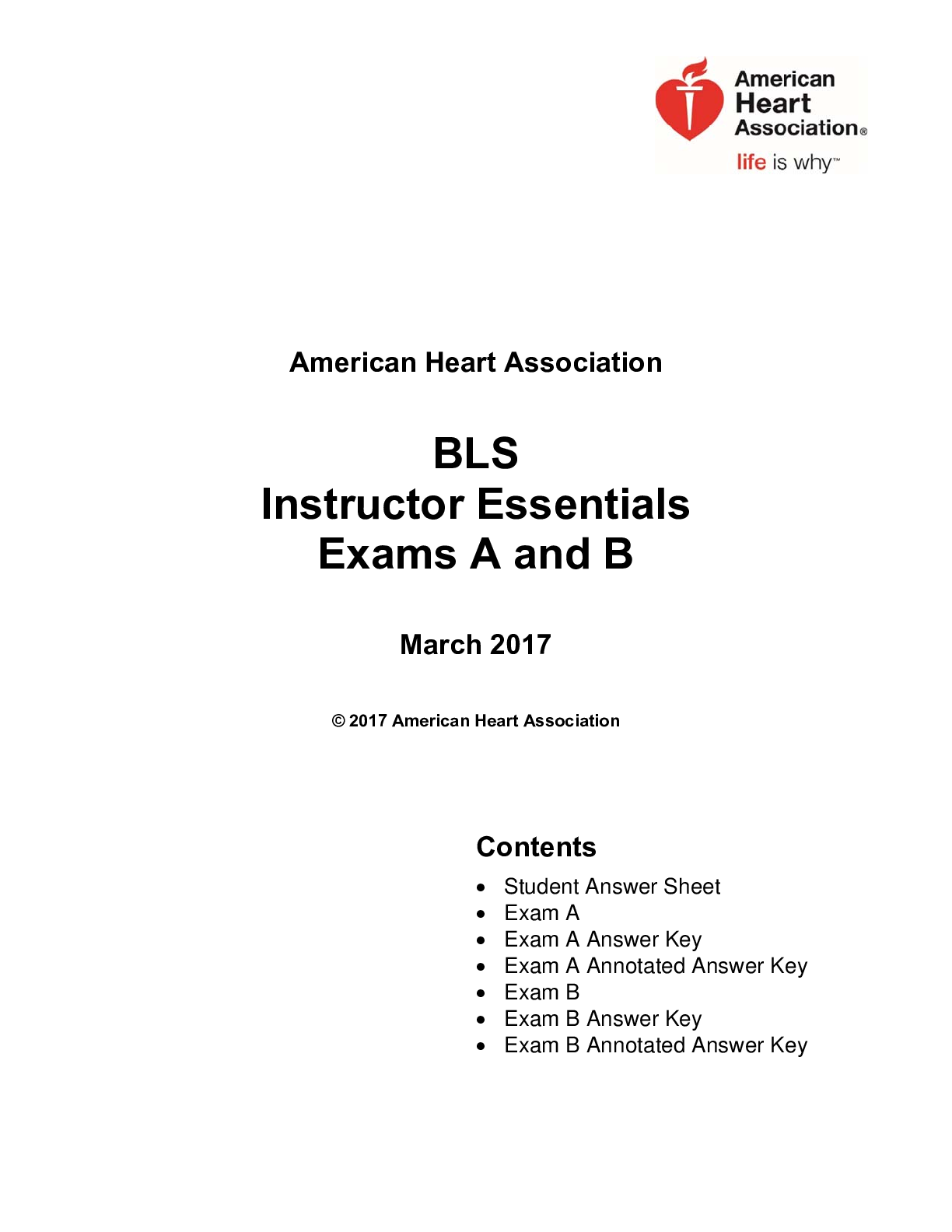
.png)
.png)
.png)



.png)
.png)
.png)
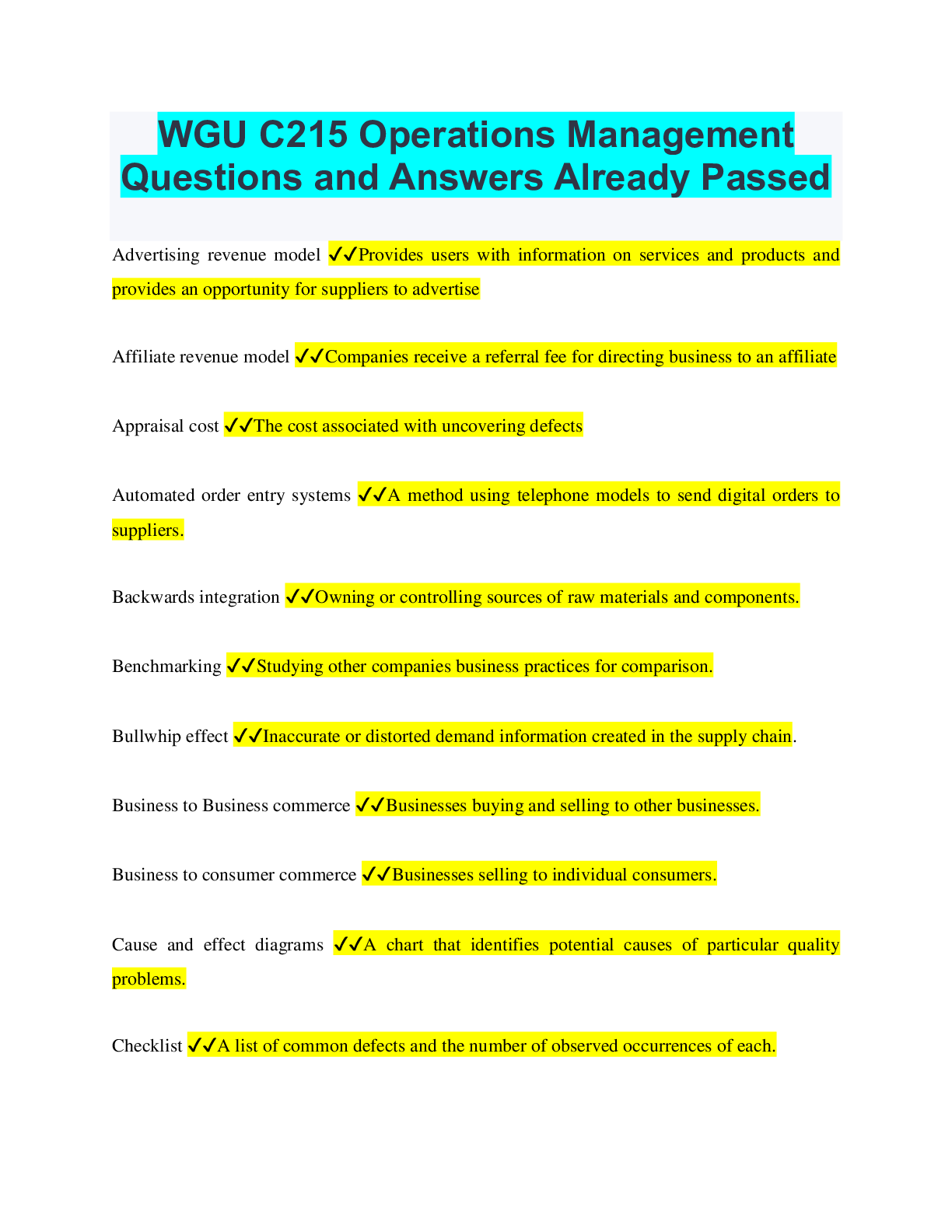
.png)
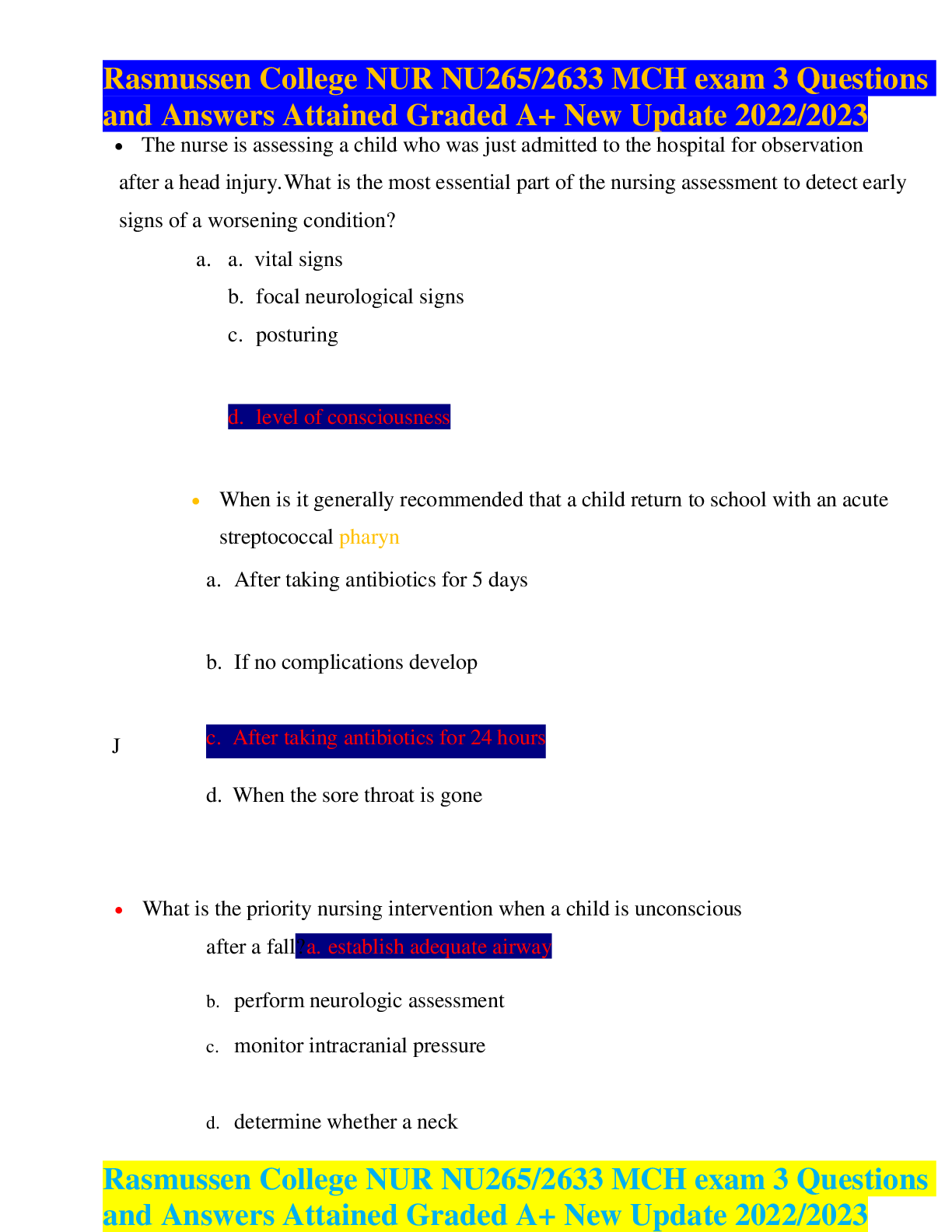
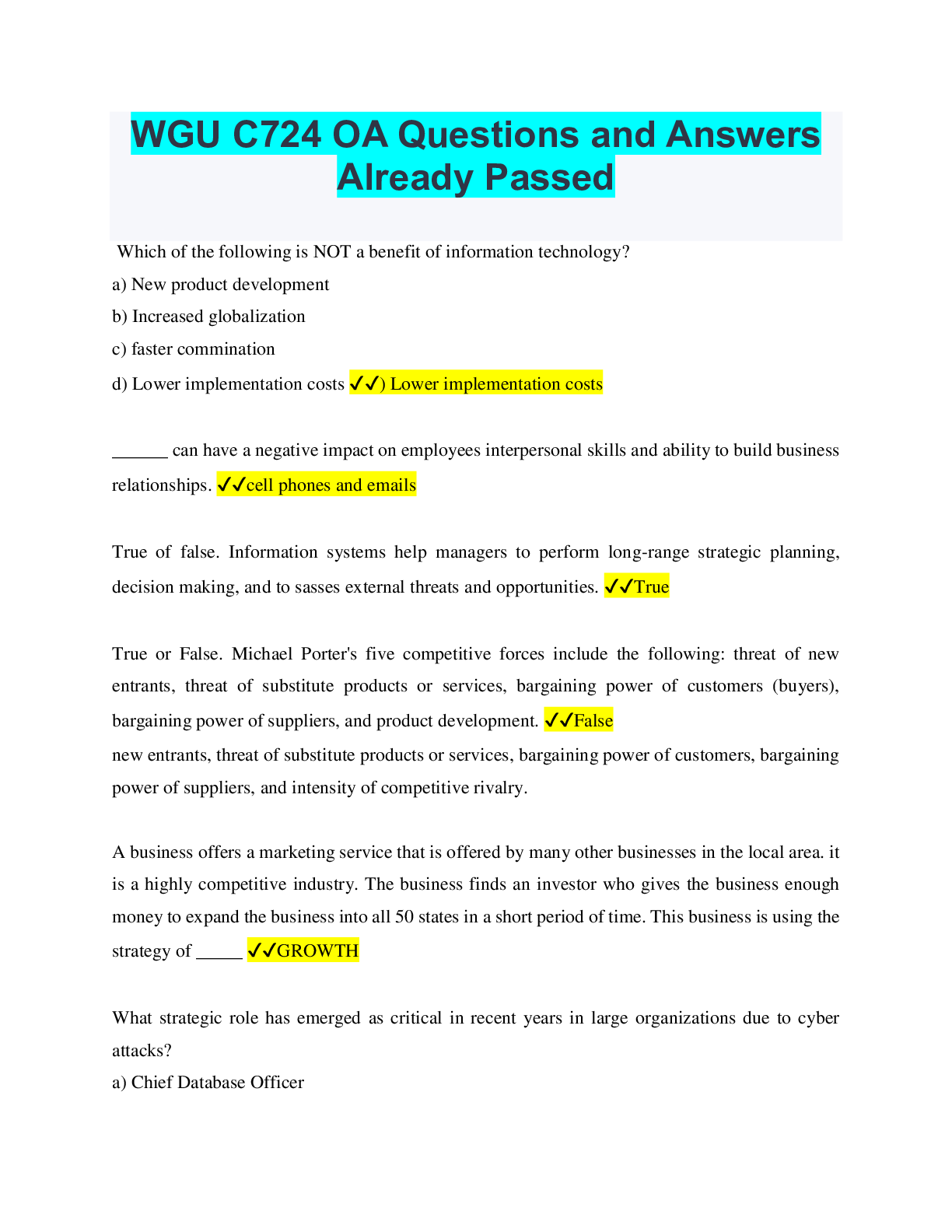
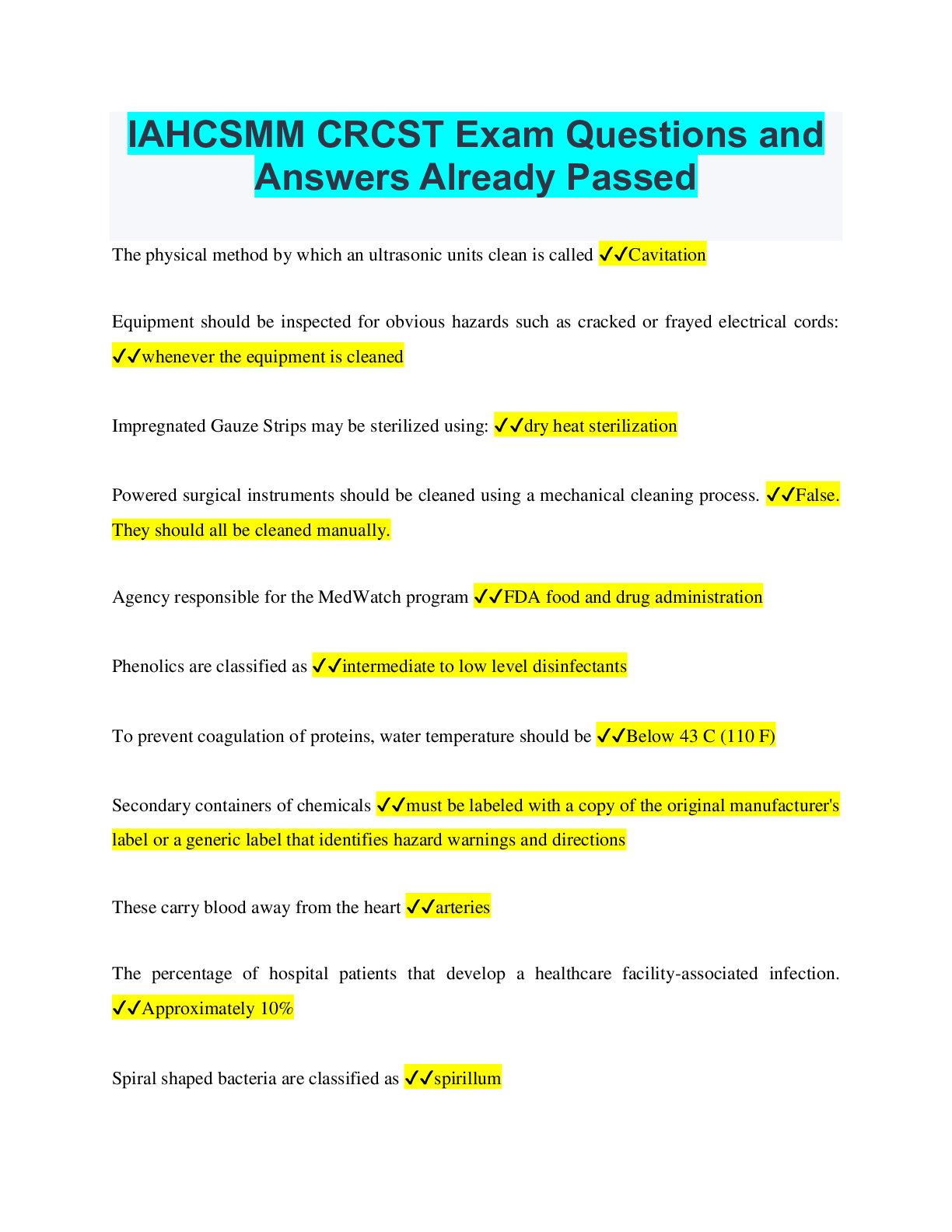
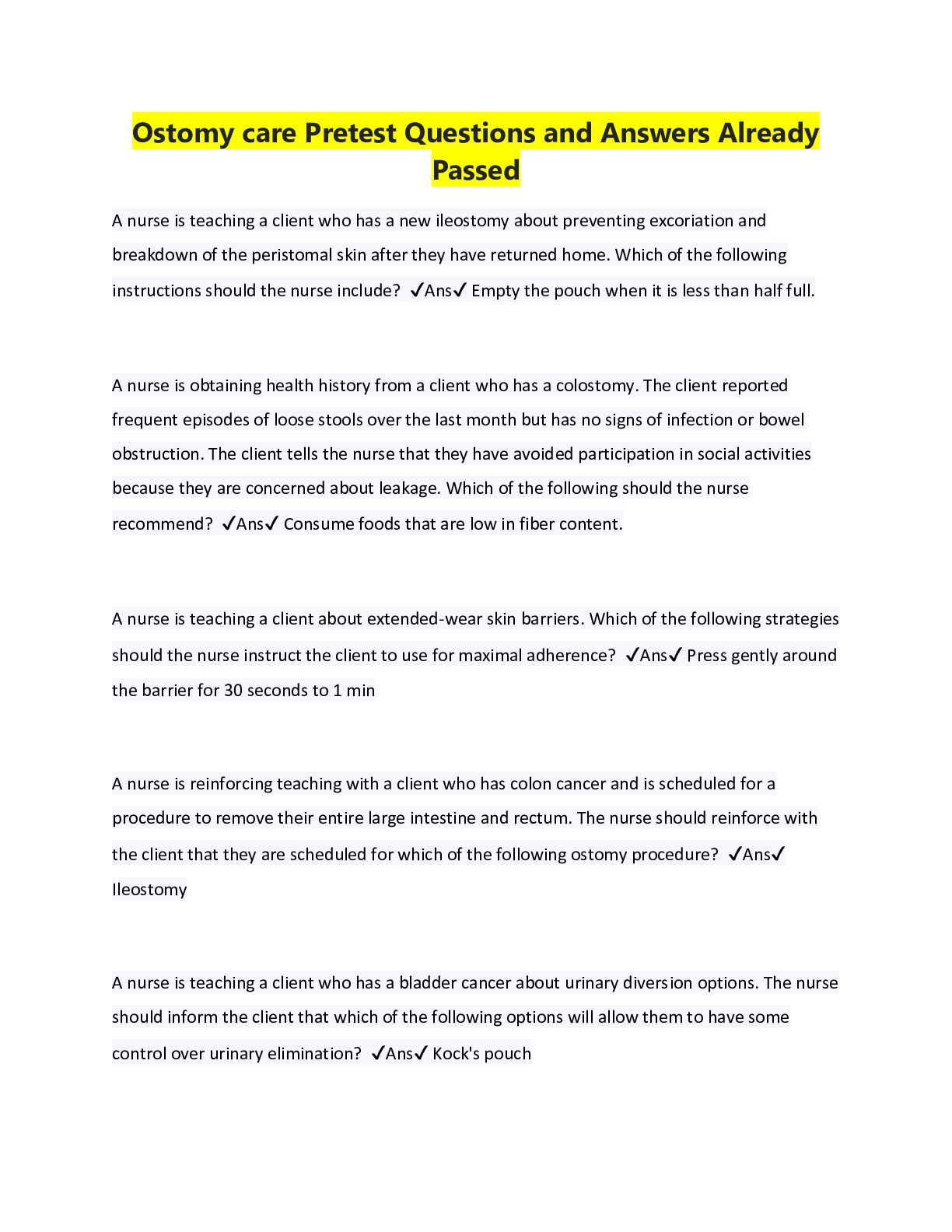
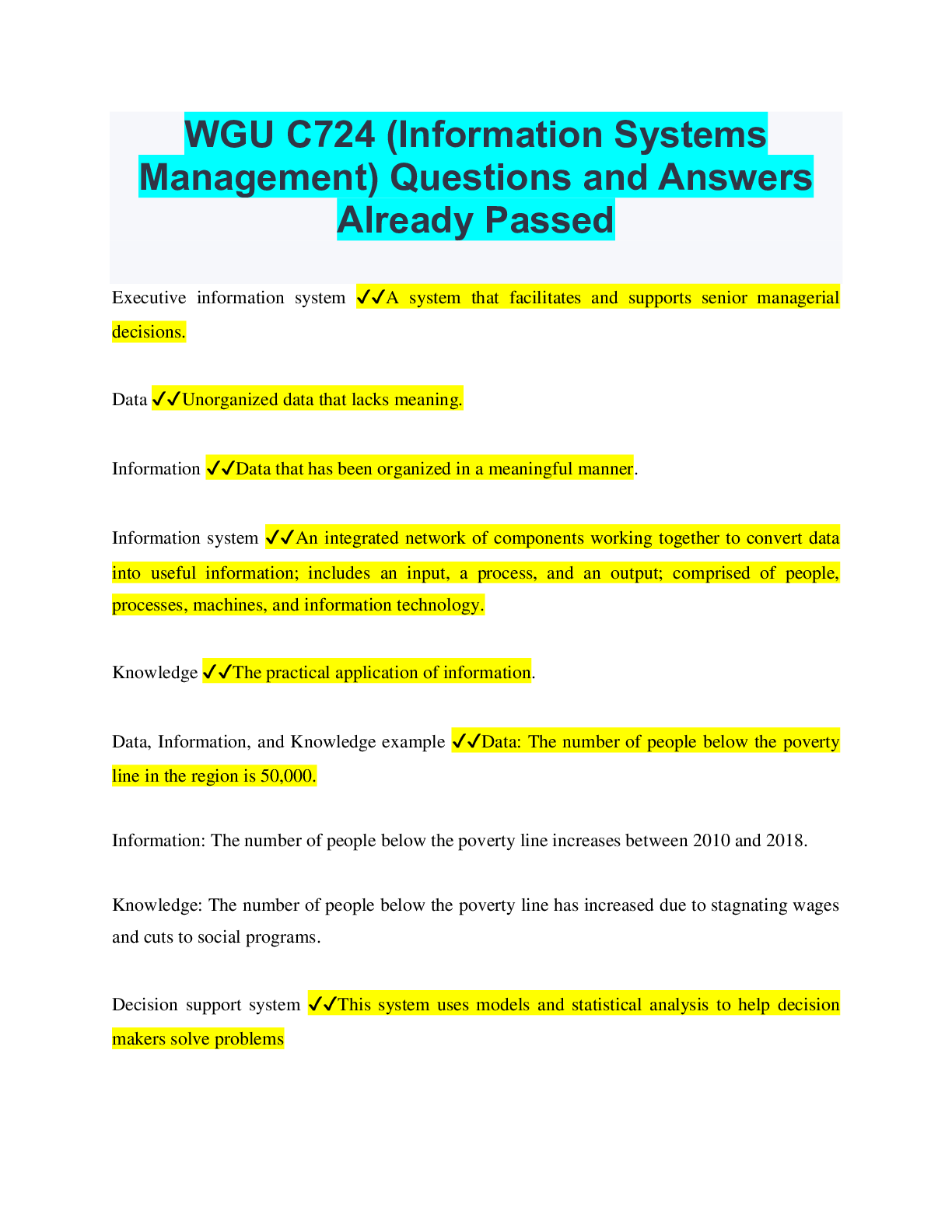
.png)
.png)
.png)

